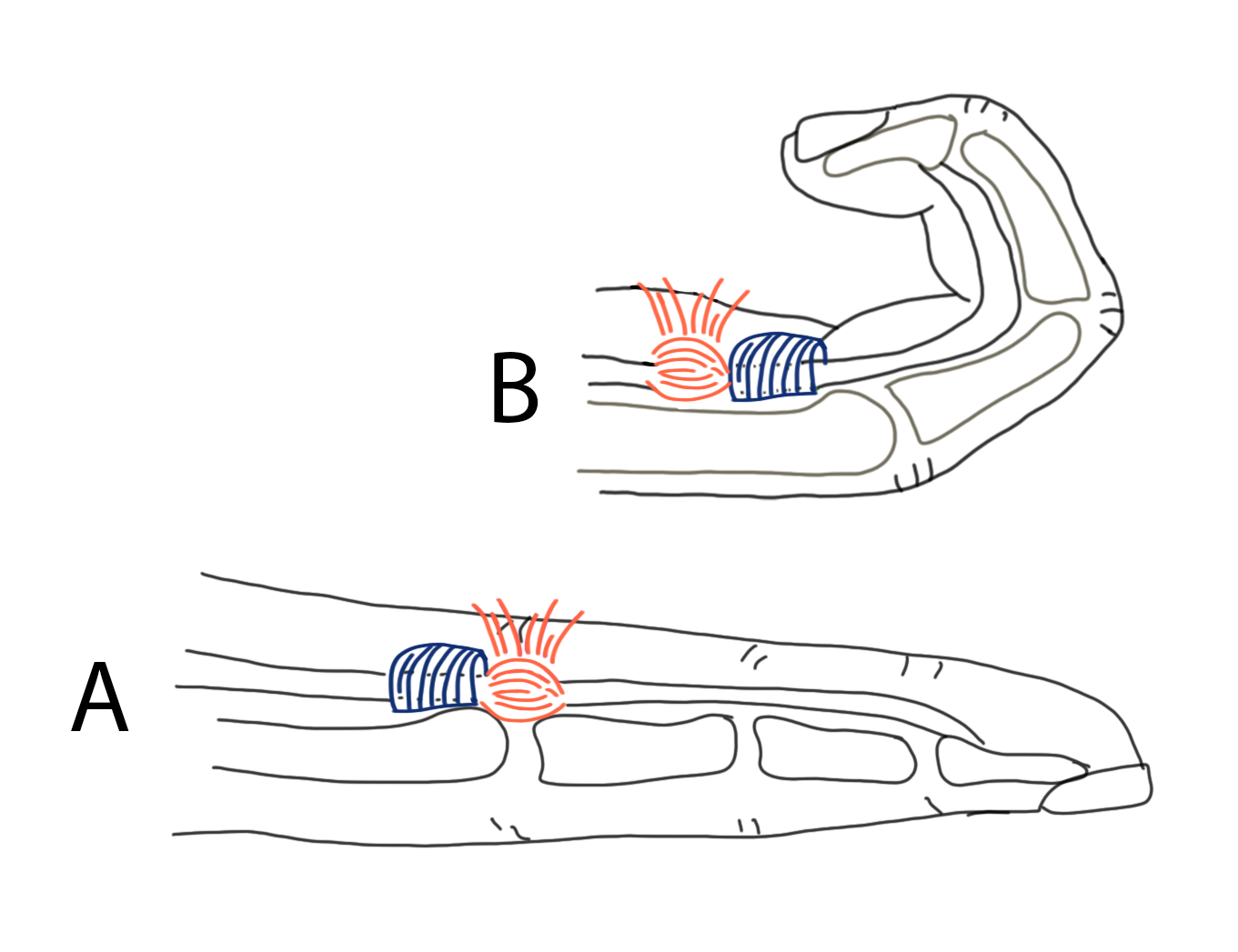Trigger Finger Steroid Injections: Are They Worth It?
read time: 6 minutes
If you’ve seen a doctor for aches and pains at any point in your life, chances are you’ve been offered a steroid injection.
Note: This post builds on last week's introduction to trigger fingers and trigger thumbs. If you’d like to catch up on that article, you can read it by clicking here.
Steroids are anti-inflammatory medications that, when injected in an area of pain, can improve symptoms.
But there’s an important question to consider first — and it’s often glossed over.
What is the purpose of the injection?
To cure the condition, or
To temporarily decrease pain to allow other modalities like therapy or bracing to work better, or
To mask the pain for a period of time
Unfortunately, many times it is the latter.
Take a badly arthritic knee as an example. A steroid injection isn’t re-growing cartilage and thus curing the knee arthritis. Nothing can do that. The steroid merely decreases the inflammation and temporarily treats the symptoms until the cycle of pain renews.
Trigger fingers are a bit of a different story. Steroid injections are extremely effective for treating trigger fingers and in many (not all) cases can result in a true cure of the condition.
Pretty cool. Let’s look at the data.
As a brief review, a trigger finger occurs when a lump of inflammation accumulates on a flexor tendon (see drawing below). These tendons bend the finger when activated. In a trigger finger, the nodule (in orange) gets stuck on a band of tissue called the A1 pulley (in blue), resulting in clicking or even locking of the finger.
A steroid injection will coat this nodule of swelling and shrink it, resulting in smooth tendon motion once again.
What does the science say?
For simplicity, the data I present today will be about single-finger trigger fingers. We do know that patients with multiple affected fingers at once have a slightly lower rate of success from steroid injections.
I’m also going to be deliberate about the difference between short-term relief (ie, did the injection ‘work’?) and cure (long-term the condition is gone). These are different outcomes but easily conflated if I’m not careful with my word choice.
Looking at all the available studies out there, it’s safe to say that the first steroid injection for any one trigger finger has about a 50% cure rate. While over 90% of first-time injections get short-term relief (I tell my patients by 6 weeks after the injection, 90% of trigger fingers are gone), the long-term cure rate of one shot is about 50%.
Pretty good. But what about the unlucky 50% of people?
If your trigger finger either didn’t fully resolve or came back after a few months, the success rate of your second injection is almost as good as the first. The data tell us that you have a nearly 40% chance of cure with either the second or the third injection. And still, over 90% of these improve in the short term.
These are good odds. In medicine, few treatments have this high of a success rate for such a simple intervention.
Things you should know
A couple of words of caution if you’re currently being treated for a trigger finger.
First, it doesn’t matter where in the palm your steroid is placed (within reason).
Ultrasound guidance of the injection down into the tendon sheath has not shown any benefit compared to putting the steroid just under the skin around the sheath without any image guidance. Which means it’s not really justifiable to have our health system (or really, you) pay for an ultrasound-guided trigger finger injection.
Other conditions? Absolutely justified. Trigger finger? Nah.
Second, with a trigger finger, and just about any other condition in the musculoskeletal system, a steroid injection in the near term before surgery will increase the risk of infection after surgery. So if you’re considering a trigger finger injection, I would highly advise you to avoid any surgery on the same hand (for trigger finger release surgery, or otherwise) in the subsequent 3 months.
That means if your steroid injection didn’t work after 6 weeks, you will need to live with that trigger finger for another 6 weeks if you want to minimize your chance of postoperative infection.
And trust me. You do.
Takeaways:
Trigger finger steroid injections are highly effective, both for short-term relief and long-term cure of the condition
Over 90% of trigger fingers will be gone 6 weeks after injection
Long term cure rates are 50%, 40%, and 40% after the 1st, 2nd, and 3rd injections, respectively
Surgery should not be performed within 3 months of steroid injection due to an increased risk of postoperative infection
Take this information and use it to make the best decision for your health. And if you need a refresher on the basics of trigger finger, you can find that here.
Education is the first step toward empowerment.
Until next week,
Dr. G
PS. By the way, 8 hours a day is a long time to sit at a computer. Did you know I made a free guide all about how to set up your workspace in the most pain-free way possible? Some call this ergonomics. Click here and I'll send it right over!
PPS. You can now email Rules of Thumb! If you have feedback or topics you'd like to learn more about, please shoot me an email at rulesofthumb@nickgolinvauxmd.com. This newsletter is meant for you — so let's write about what you care about!
**Please do not use this email to try to obtain medical advice. I cannot legally or ethically provide that. If you are having a medical emergency, please call 911 and do not attempt to contact me through email.**




